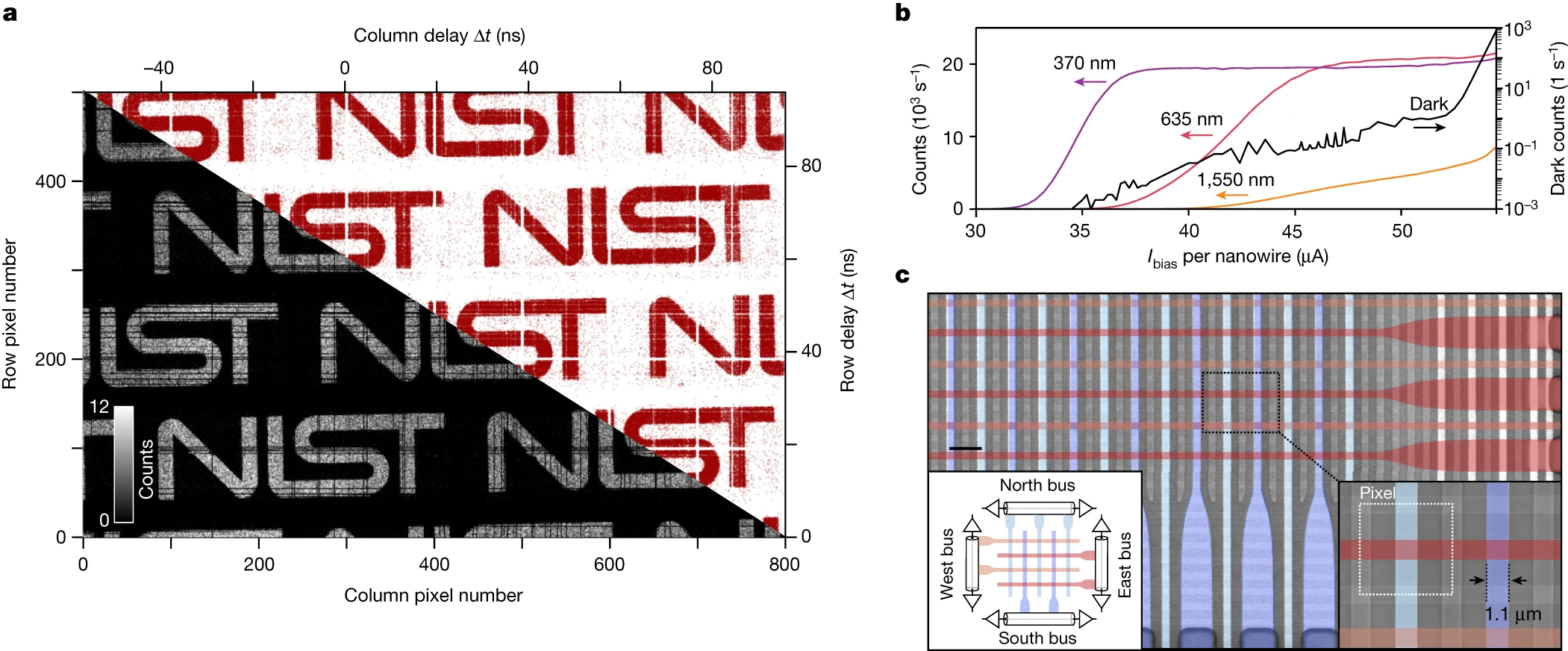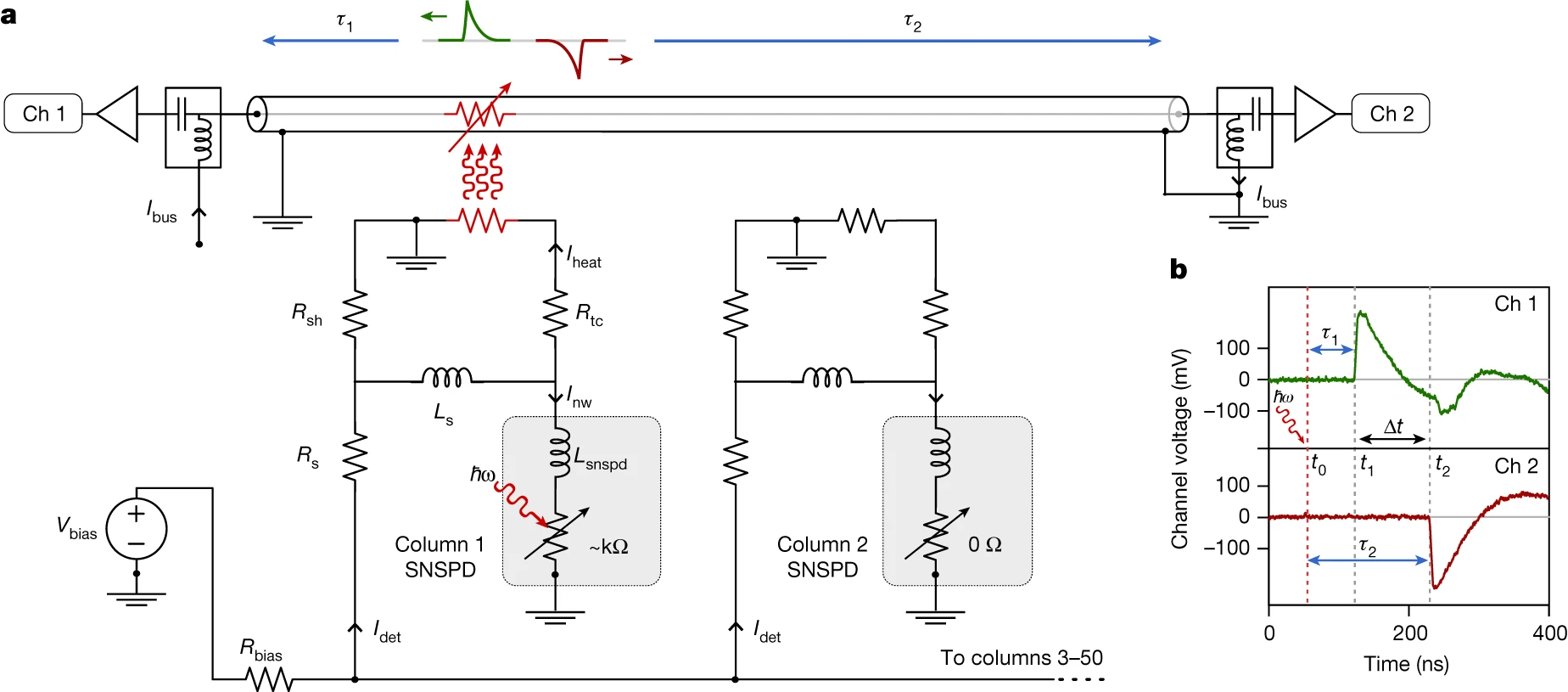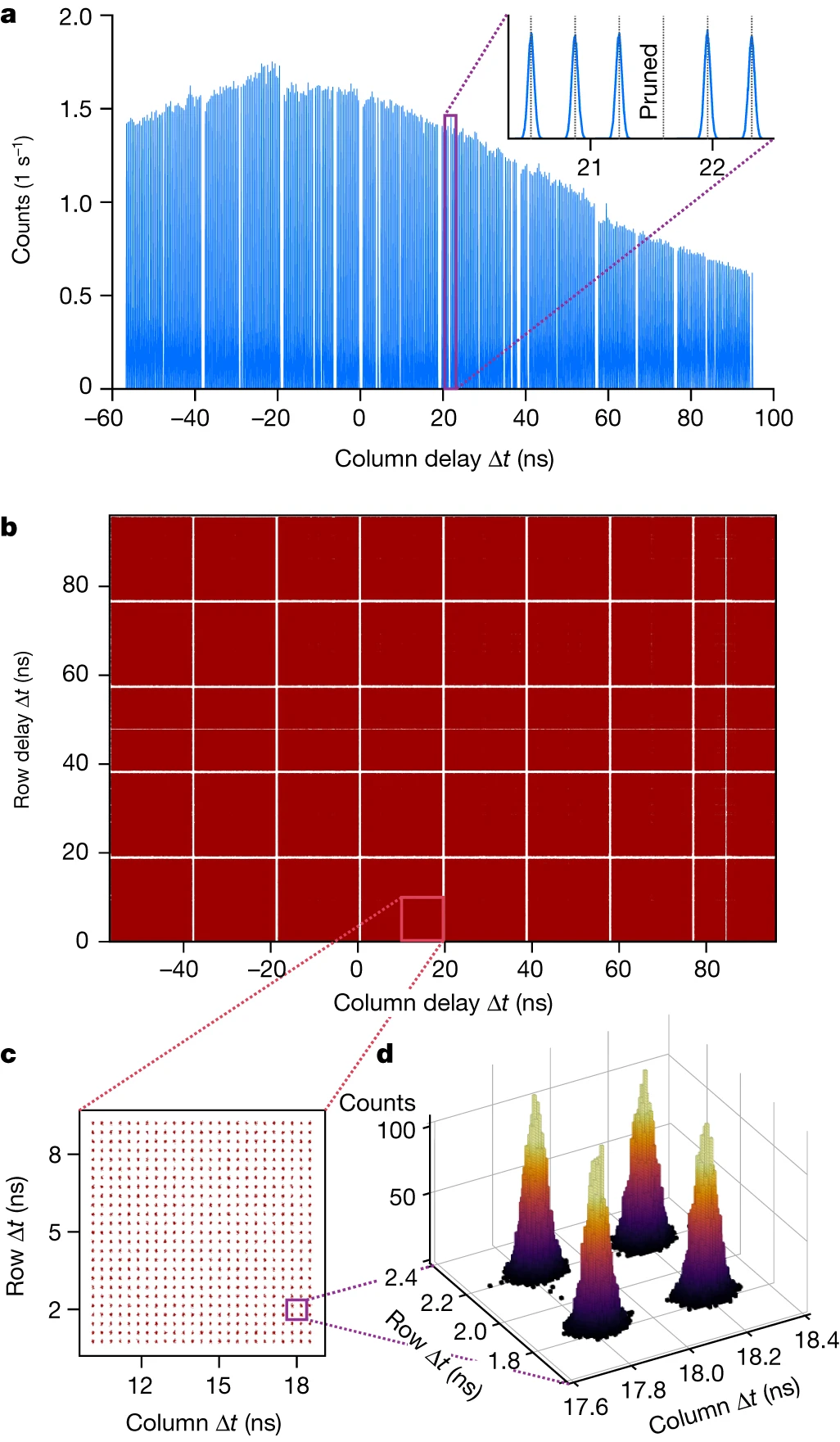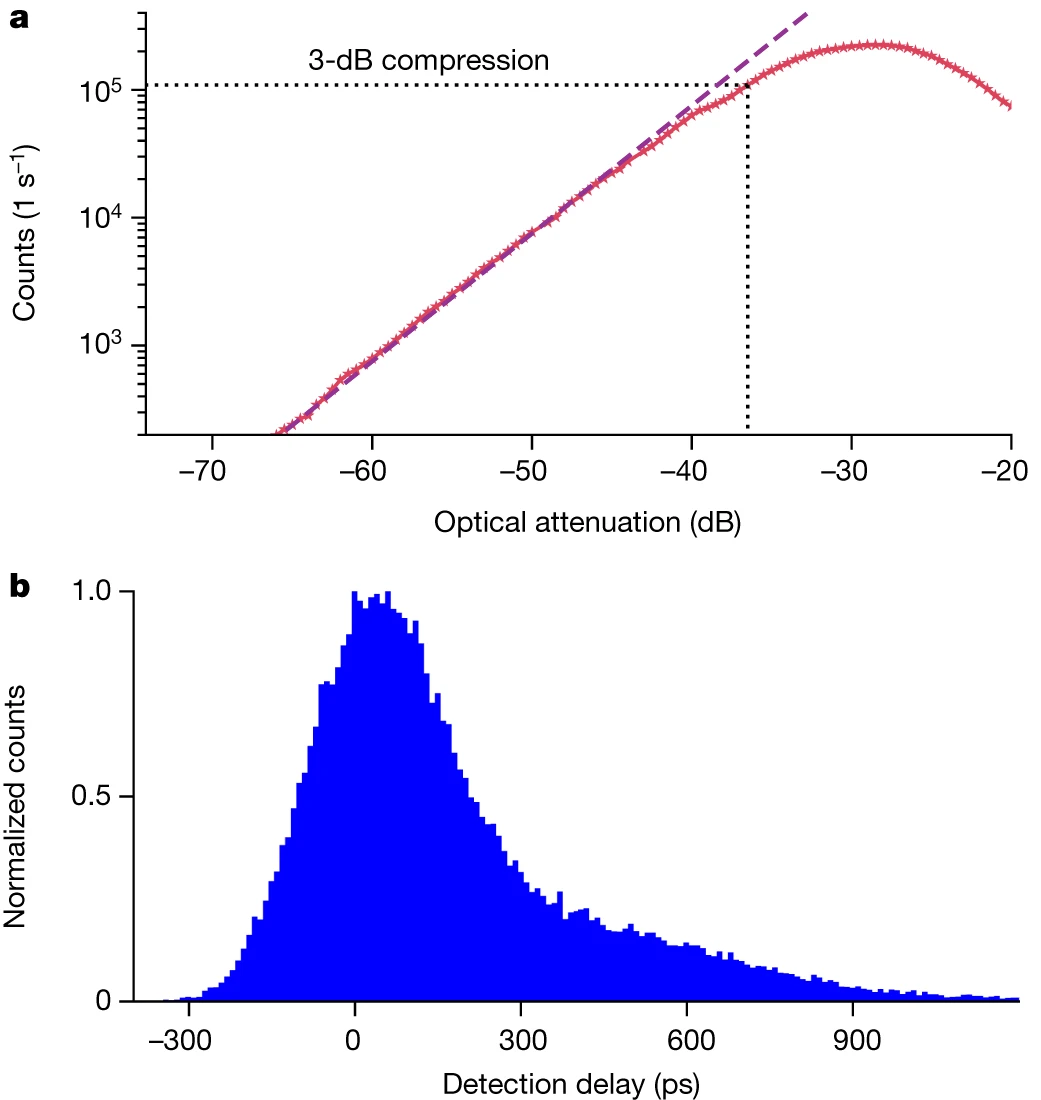Oripov et al. from NIST and JPL recently published a paper titled "A superconducting nanowire single-photon camera with 400,000 pixels" in Nature.
Abstract: For the past 50 years, superconducting detectors have offered exceptional sensitivity and speed for detecting faint electromagnetic signals in a wide range of applications. These detectors operate at very low temperatures and generate a minimum of excess noise, making them ideal for testing the non-local nature of reality, investigating dark matter, mapping the early universe and performing quantum computation and communication. Despite their appealing properties, however, there are at present no large-scale superconducting cameras—even the largest demonstrations have never exceeded 20,000 pixels. This is especially true for superconducting nanowire single-photon detectors (SNSPDs). These detectors have been demonstrated with system detection efficiencies of 98.0%, sub-3-ps timing jitter, sensitivity from the ultraviolet to the mid-infrared and microhertz dark-count rates, but have never achieved an array size larger than a kilopixel. Here we report on the development of a 400,000-pixel SNSPD camera, a factor of 400 improvement over the state of the art. The array spanned an area of 4 × 2.5 mm with 5 × 5-μm resolution, reached unity quantum efficiency at wavelengths of 370 nm and 635 nm, counted at a rate of 1.1 × 105 counts per second (cps) and had a dark-count rate of 1.0 × 10^−4 cps per detector (corresponding to 0.13 cps over the whole array). The imaging area contains no ancillary circuitry and the architecture is scalable well beyond the present demonstration, paving the way for large-format superconducting cameras with near-unity detection efficiencies across a wide range of the electromagnetic spectrum.
Link: https://www.nature.com/articles/s41586-023-06550-2
a, Imaging at 370 nm, with raw time-delay data from the buses shown as individual dots in red and binned 2D histogram data shown in black and white. b, Count rate as a function of bias current for various wavelengths of light as well as dark counts. c, False-colour scanning electron micrograph of the lower-right corner of the array, highlighting the interleaved row and column detectors. Lower-left inset, schematic diagram showing detector-to-bus connectivity. Lower-right inset, close-up showing 1.1-μm detector width and effective 5 × 5-μm pixel size. Scale bar, 5 μm.
a, Circuit diagram of a bus and one section of 50 detectors with ancillary readout components. SNSPDs are shown in the grey boxes and all other components are placed outside the imaging area. A photon that arrives at time t0 has its location determined by a time-of-flight readout process based on the time-of-arrival difference t2 − t1. b, Oscilloscope traces from a photon detection showing the arrival of positive (green) and negative (red) pulses at times t1 and t2, respectively.
a, Histogram of the pulse differential time delays Δt = t1 − t2 from the north bus during flood illumination with a Gaussian spot. All 400 detectors resolved clearly, with gaps indicating detectors that were pruned. Inset, zoomed-in region showing that counts from adjacent detectors are easily resolvable and no counts were generated by a pruned detector. b, Plot of raw trow and tcol time delays when flood illuminated at 370 nm. c, Zoomed-in subsection of the array with 25 × 25 detectors. d, Histogram of time delays for a 2 × 2 detector subset with 10-ps bin size showing clear distinguishability between adjacent detectors.
a, Count rate versus optical attenuation for a section of detectors biased at 45 μA per detector. The dashed purple line shows a slope of 1, with deviations from that line at higher rates indicating blocking loss. b, System jitter of a 50-detector section. Detection delay was calculated as the time elapsed between the optical pulse being generated and the detection event being read out.
News coverage: https://www.universetoday.com/163959/a-new-superconducting-camera-can-resolve-single-photons/
A New Superconducting Camera can Resolve Single Photons
Researchers have built a superconducting camera with 400,000 pixels, which is so sensitive it can detect single photons. It comprises a grid of superconducting wires with no resistance until a photon strikes one or more wires. This shuts down the superconductivity in the grid, sending a signal. By combining the locations and intensities of the signals, the camera generates an image.
The researchers who built the camera, from the US National Institute of Standards and Technology (NIST) say the architecture is scalable, and so this current iteration paves the way for even larger-format superconducting cameras that could make detections across a wide range of the electromagnetic spectrum. This would be ideal for astronomical ventures such as imaging faint galaxies or extrasolar planets, as well as biomedical research using near-infrared light to peer into human tissue.
These devices have been possible for decades but with a fraction of the pixel count. This new version has 400 times more pixels than any other device of its type. Previous versions have not been very practical because of the low-quality output.
In the past, it was found to be difficult-to-impossible to chill the camera’s superconducting components – which would be hundreds of thousands of wires – by connecting them each to a cooling system.
According to NIST, researchers Adam McCaughan and Bakhrom Oripov and their collaborators at NASA’s Jet Propulsion Laboratory in Pasadena, California, and the University of Colorado Boulder overcame that obstacle by constructing the wires to form multiple rows and columns, like those in a tic-tac-toe game, where each intersection point is a pixel. Then they combined the signals from many pixels onto just a few room-temperature readout nanowires.
The detectors can discern differences in the arrival time of signals as short as 50 trillionths of a second. They can also detect up to 100,000 photons a second striking the grid.
McCaughan said the readout technology can easily be scaled up for even larger cameras, and predicted that a superconducting single-photon camera with tens or hundreds of millions of pixels could soon be available.
In the meantime, the team plans to improve the sensitivity of their prototype camera so that it can capture virtually every incoming photon. That will enable the camera to tackle quantum imaging techniques that could be a game changer for many fields, including astronomy and medical imaging.




0 Response to "A 400 kilopixel resolution superconducting camera"
Post a Comment